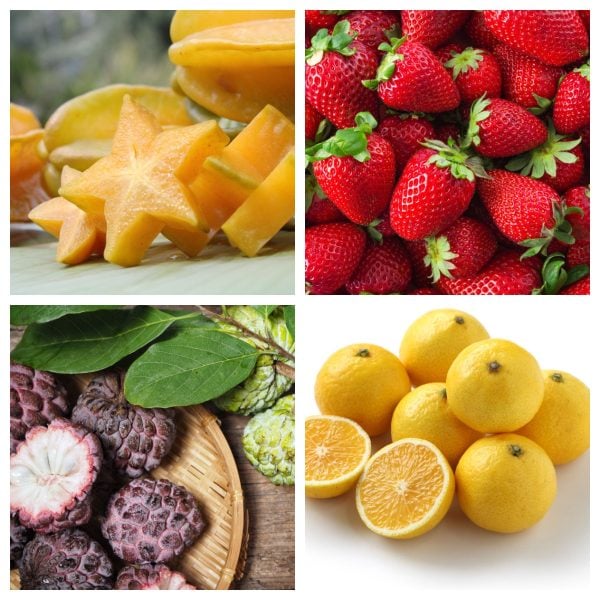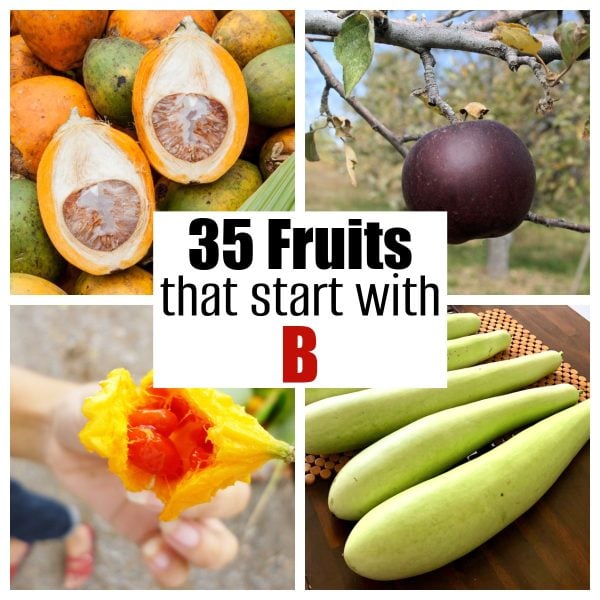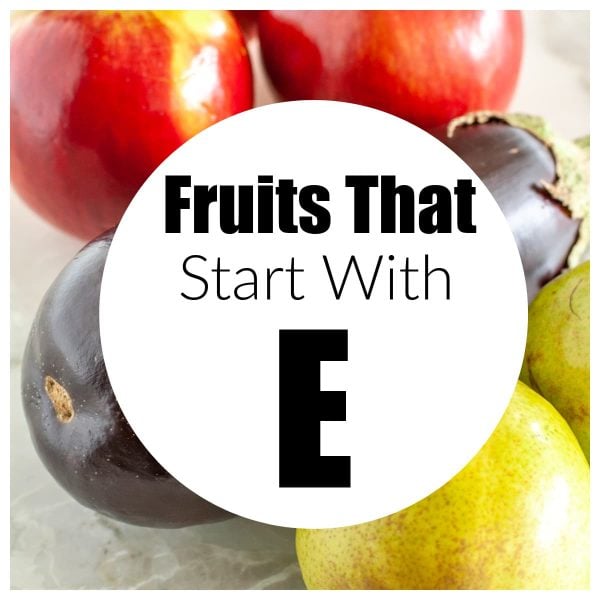21 Fruit That Starts With N
Jun 30, 2022, Updated Oct 05, 2024
This post may contain affiliate links. Please read our disclosure policy.
There’s no denying that fruits are an important part of our diet. Bursting with antioxidants, vitamins and minerals, fruits can do wonders for your overall health.
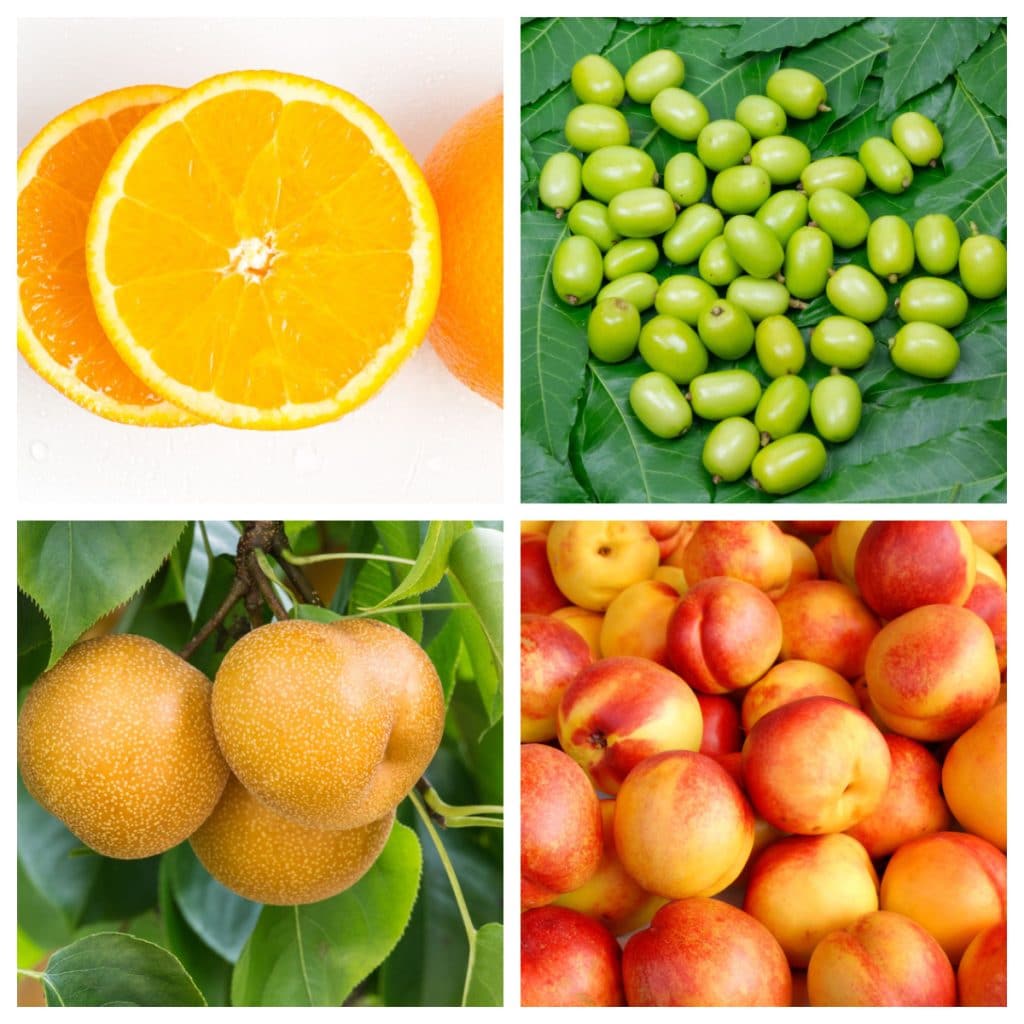
However, if you’re tired of eating the same-old fruit varieties, we’re here to help you out. Just for fun, we decided to make a list of a few fruit that starts with N, some you may have encountered in the produce section and some you might not have seen or even heard of. So, let’s get started!
1. Navel Orange
Ever wondered why people religiously have orange juice in the morning? It’s all because of that enormous vitamin C content and the glow it gives. Navel oranges are known to be the world’s best oranges in terms of taste.
Interestingly, Navel oranges got their name due to their human navel-like appearance. It’s the mark of the stem of a town fruit that grows from it. They belong to the citrus fruit family of winters.
2. Nashi Pear
What would be better than a combo of pear and apple in one fruit? Nashi pear is crispy like an apple and as sweet as a pear.
Fun fact: Nashi pear has unlimited names like Nashi apple, apple pear, Asian pear, Korean pear, Japanese pear, Chinese pear, sand pear, and bapple. So, call it whatever you like.
3. Nance Fruit
Do you want to try fruits with weird names? Nance fruit is what you are looking for. These small round fruits are highly nutritious and can be found in late summers.
Interestingly, Nance fruits are often referred to as Golden Spoon, Yellow Cherry or Golden Cherry. It is because they supply nectar to bees in the spring season.
Nance fruits are slightly acidic but taste sweet once fully ripened.
4. Northern Spy Apple
What could be better than an apple that can spy as well? Northern Spy is a popular old variant of American winter apples.
The Northern Spy apple is known for its tender-crisp, crunchy exterior, and very creamy and juicy flesh. Its taste has a slight acidity, but overall, the flavor is similar to cider with undertones of pear and sweetness.
Northern Spy apples can also be eaten on their own and are great for cider and pies.
5. Natal Plum
Everyone’s favorite plums have also made it to the list! The bright red color makes it look like a small tomato but, don’t let that confuse you; it’s actually a Natal Plum.
They are tapered or pointed at one end and feature a brilliant red outer peel and flesh. When sliced the plum reveals a beautiful milky white sap. It contains enormous amounts of Vitamin C, iron, and potassium.
Natal Plums are traditionally used for medicinal purposes to treat colds and flues. It is also used as a remedy for toothaches.
6. Nepali Hog Plum
If you want to experience Nepal from afar, get yourself a Nepali Hog Plum! It is a native fruit of Nepal and is commonly known as Lapsi.
When mature, the fruit is greenish-yellow and slightly oval in structure, like a bit of plum. Even completely ripe, it is highly sour and abundant in vitamin C.
Some people enjoy eating fresh lapsis because of their pleasant sour flavour, although they are mainly used to produce sweet and salty dried fruit nuggets or leather.
7. Neem Fruit
Considering the unlimited healing properties of neem, nothing can be better than a neem fruit. This green fruit has a smooth texture and is around 2cm long.
Flowers are used as flavoring; nevertheless, until cooked, they are bitter. Along with other veggies, they are fried or eaten raw. Neem fruit pulp that is fully ripe is consumed raw, cooked, and utilized in beverages.
Neem fruit has a delicious pulp that surrounds a seed when fully ripe, and it is yellow or greenish-yellow in color.
8. Nonda Plum
Plum is undoubtedly the star of the show for this list. Who even knew there were so many kinds of plums? Nonda plum is a fruit of the wilds that ripens in the dry season.
A little tree or shrub known as Parinari nonda, sometimes Nonda plum, has its roots in the Chrysobalanaceae family.
Fun fact: Nonda plum got its name from an Australian explorer, Leichhardt. The fruit’s exterior is hard, tough, and surrounded by brown hairs.
9. Naartjie Fruit
What’s better than a seedless fruit? Naartjie fruit typically has no seeds and thin, leathery skin with many oil glands.
The fruit’s outer skin is readily peeled off, but the inside flesh must be handled carefully since it is highly delicate and cannot tolerate force. Naartjie fruit resembles mandarin oranges and possesses a sweet taste.
Naartjie fruit contains antioxidants and is a vital vitamin C, folate, and beta-carotene source. It helps to strengthen the immune system and lighten pigmentation.
10. Newtown Pippin Apples
Apples and Newton have a decade-long connection; Newtown Pippin Apples are not derived from that connection though. However, it was very much the well-known apple of its time.
One of the first apple types in America, Newtown Pippin was popular in the 18th century and was likely cultivated as a seedling by early immigrants on Long Island.
A particularly adaptable apple, Newtown Pippin is great for cooking, baking, and juicing concentrated cider. It’s a very high-grade culinary apple that cooks up with some form of retention and yields a textured puree with a very nice, rich taste.
11. Nam Dok Mai
Mango is everyone’s fruit! Nam Dok Mai is just another addition to your favorite types of mangoes. Nam Dok Mai originates from the lands of Australia and is quite popular in Thailand.
Nom Dok Mai has the same rich, sweet, and excellently fresh taste as other mangoes. Similarly, unripened Nam Dok Mai is extremely sour and is used in Thai cuisine.
Nom Dok Mai is known for having very little fiber in it. It is a globally favorite fruit and one should definitely try it out at least once.
12. Nutmeg Fruit
Nutmeg is a common spice and can be eaten as a fruit too. However, it is very rare to find a Nutmeg fruit. Nutmeg is actually the seed of a fruit that looks like a peach.
It is widely used in cuisines and cooking for its woody flavor and fragrance. A common way to use Nutmeg fruit is to juice it with some ginger and concentrated lemon juice.
Nutmeg fruit can itself be eaten with bread or can be topped on cereals. It adds a tasty earthy flavor to any food.
13. Narajilla Fruit
A small round orange-like fruit that tastes better than orange; who wouldn’t want to try it out? Narajilla is a Spanish word that means ‘little orange’.
The naranjilla is a little fruit with a powerful punch. The deceptive fruit is connected to eggplant and tomatoes rather than the citrus family, despite its name and color. Unripe Narajilla is covered in small brown hair and resembles a kiwi.
The 2.5-inch spherical naranjilla fruit has a smooth, leathery skin that, when mature, resembles a little orange. The naranjilla’s flesh has a pale yellow-orange color with a thick ring of luscious green pulp and tiny, thin seeds.
14. Nere Fruit
An aesthetically pleasant-looking fruit is definitely worth a try! The rich reddish-orange color is what makes it look incredibly aesthetic.
Nere is originally the name of a tree found in African environments. The Nere fruit is also called African locust bean or dodongba. It’s mainly cultivated for valuable seeds and sweet pulp.
The Nere fruit along with the tree’s branches and flowers is used in traditional medicines to treat various diseases.
15. Nagami Kumquat
One of the tiniest orange-colored fruits, Nagami Kumquat, has a mildly sweet flavor. It has a smooth, shiny, and round exterior similar to that of an olive.
Fun fact: The entire fruit along with peels, seeds, and flesh are edible! However, people usually discard the seeds. It can be used in both savory and sweet dishes due to its acidic nature.
Since Nagami Kumquat is very small in size they grow in clusters and can nearly tuck in anywhere. The sweetest type of Nagami Kumquat is Melwa.
16. Nectacotum Fruit
You’ll be highly confused when picking this one out; whether it is a peach, plum or nectarine? Nectacotum fruit is basically a hybrid between a peach, a plum, and a nectarine.
It imparts a beautiful reddish-green color and the flesh is light pink. The sweet flavor of Nectacotum Fruit blends well with the tanginess of berries or a green salad. The best part about it is that it is high in vitamin C while being cholesterol, sodium, and fat-free fruit!
It can be used to make both savory and sweet dishes like jellies, and jams or can be served with potatoes and cured meat.
17. Nectarine
This one might also fool you into thinking it is a peach. However, it isn’t. Stone fruit, like nectarines and peaches are related. A kind of peach without the fuzzy skin is called nectarine.
With equivalent quantities of fiber, natural sugars, and minerals, they are almost nutritionally identical. However, Nectarines maintain their firmness when cooking, but peaches are better suited for baking and dishes with softer textures.
This delicious fruit has little fat and few calories and aid in the absorption of iron while encouraging weight loss.
18. Nocera
The elite vibe one gets while eating red wine grapes is not to be missed out on. Nocera is a premium red wine grape variety that is indigenous to Sicily.
Even in the blazing Sicilian heat, Nocera is able to maintain decent acidity. Due to the obvious thick-skinned berries, it has pronounced tannins, which produce structured wines with significant palate weight.
It has an intense alcoholic flavor with an elegant punch of fruity spice. Nocera wine goes well with deep dish pizzas and roasted beef.
19. Nannyberry
If you are on the hunt to try on some unique fruits, Nannyberry is what you are looking for!
Nannyberry is a great addition to the list of fruit that starts with N. A wild fruit that grows in clusters and is incredibly sweet in taste, ripens around the late fall season. The taste falls somewhere between a banana and a prune which is why they are often called sweet viburnum.
The incredibly sweet flavor makes it children’s favorite summer delight. So this summer, don’t miss out on Nannyberries.
20. Noni
Noni is just another deceptive fruit that will have you thinking it is a mango. All you need to do is step a little closer to smell it and the truth is out.
A yellow-colored lumpy fruit just about the size of mango is none other than Noni. It has a tangy smell that has been likened to smelly cheese and is quite bitter. For more than 2000 years Noni has been used in traditional medicine to treat various health issues.
It is commonly consumed as a juice which is quite popular amongst people due to the benefits it entails. The Noni juice is mixed with other additives or juices to make the taste bearable.
21. Nuts
Want something healthy to snack on? Nuts will definitely be your best friend. Nuts are such a versatile dry fruit that they can be literally used on and with everything and anything.
Or they can be simply enjoyed on their own as a snack. Moreover, they are packed with powerful nutrients and minerals. However, it is best to consume nuts in small quantities or they can have adverse effects on the body.
It is best to use nuts as toppings for your salads, smoothies, desserts, and as a side snack when you just need something to munch. It will save you from gaining those extra calories through chips and biscuits.
More Fruits To Try
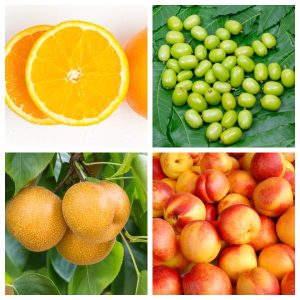
Fruit That Starts With N
Ingredients
- 2 nectarines cut in half, seed removed
- 1/2 teaspoon ground cinnamon
- 1/4 cup honey
Instructions
- Preheat oven to 350 degrees F.
- Prepare a small baking dish by spraying with non-stick cooking spray.
- Put the nectarine halves in the baking dish making sure to put them cut side up.
- Drizzle honey over nectarines and then sprinkle with cinnamon.
- Bake for about 20 minutes.
Nutrition
Nutrition information is automatically calculated, so should only be used as an approximation.

